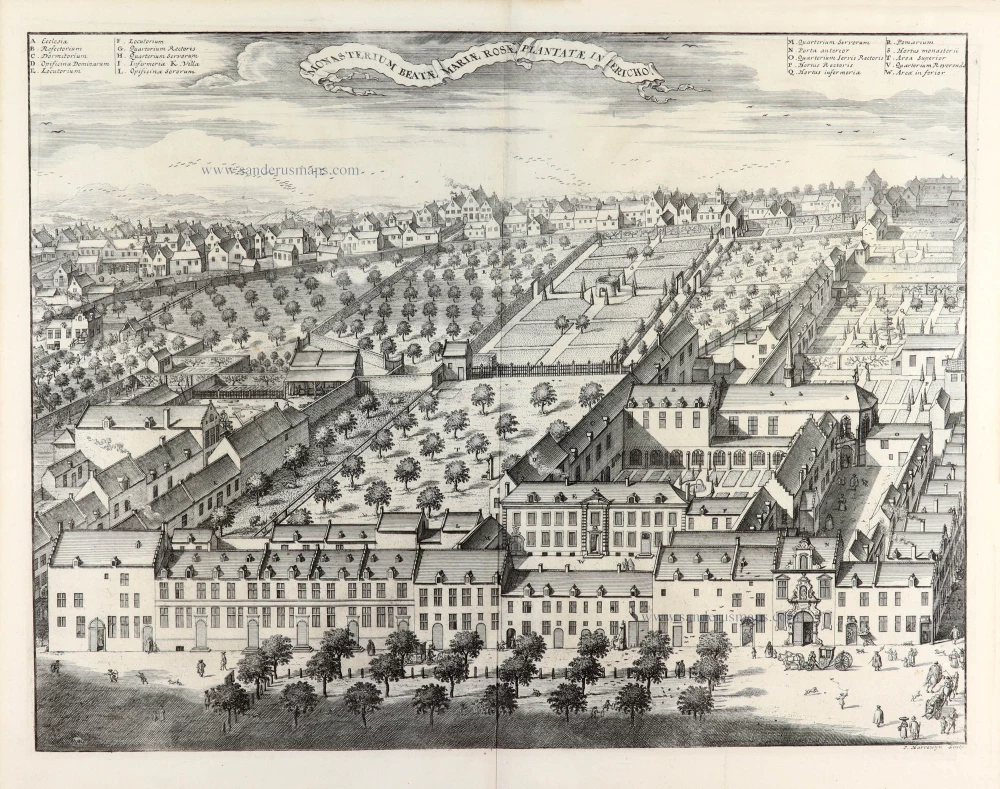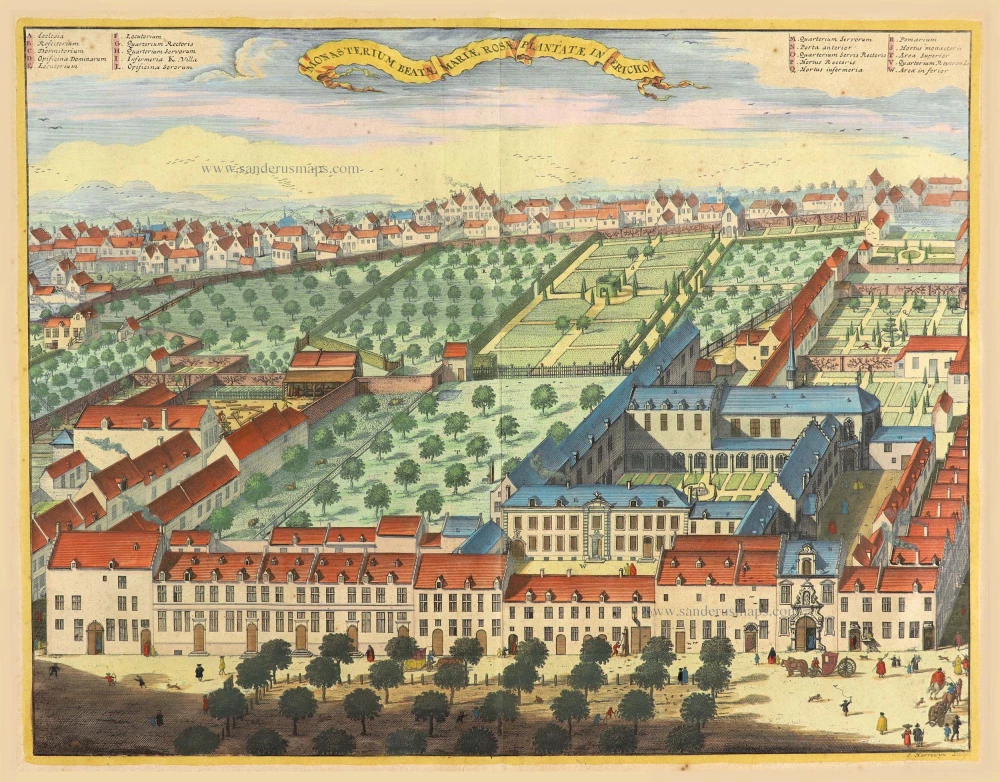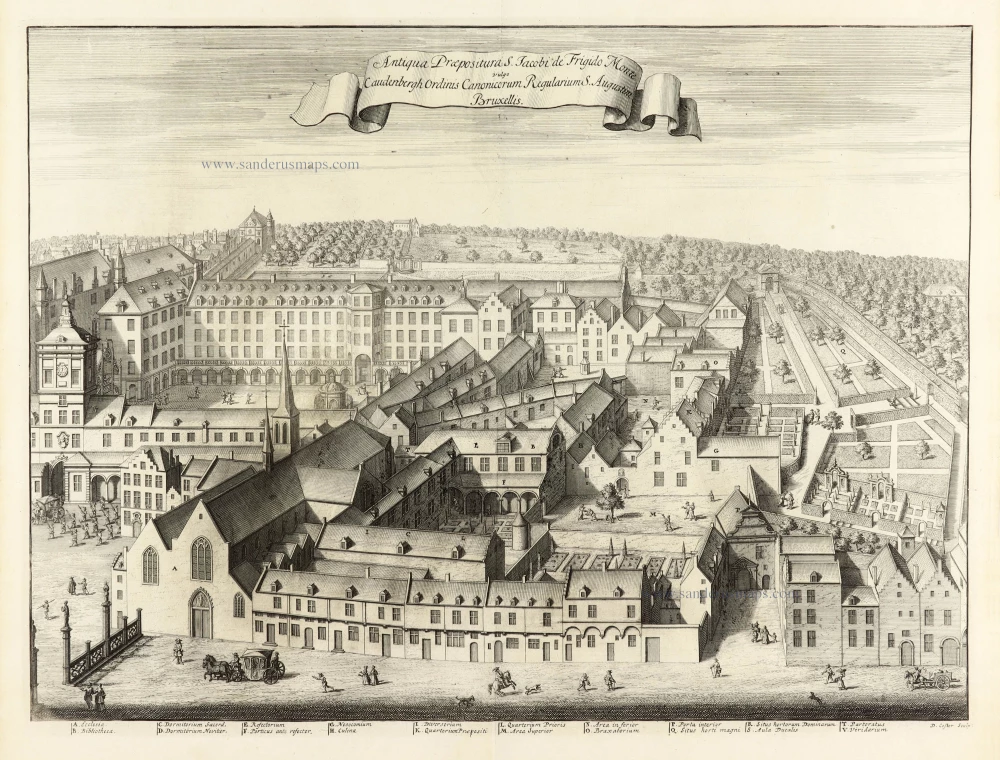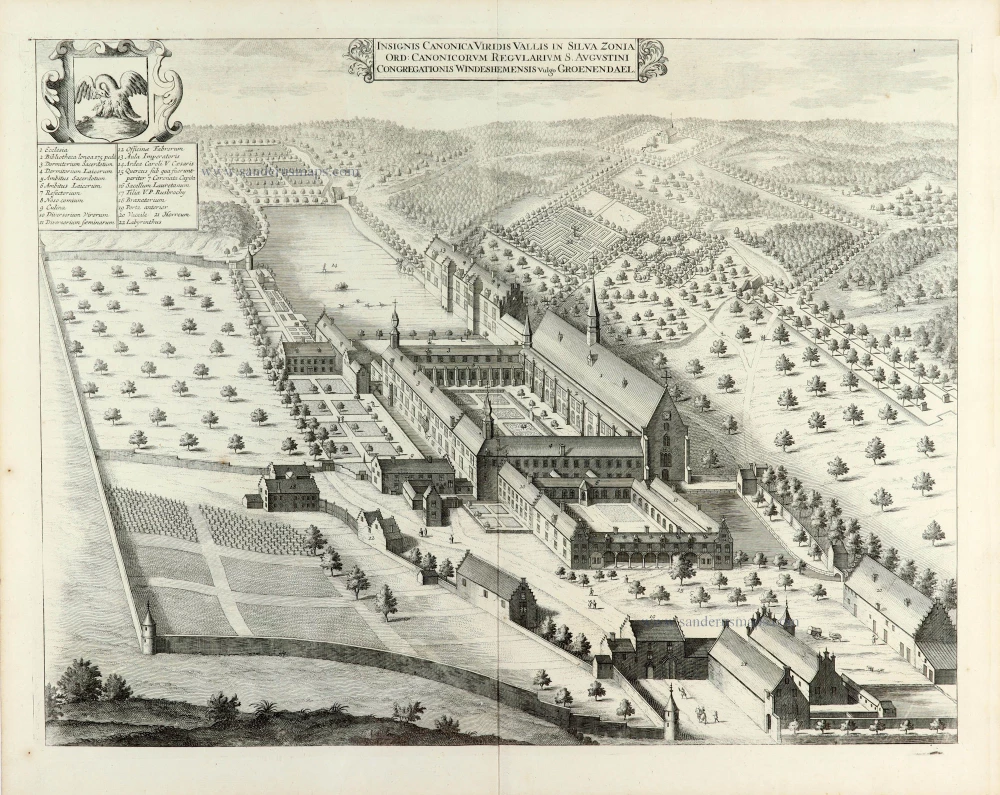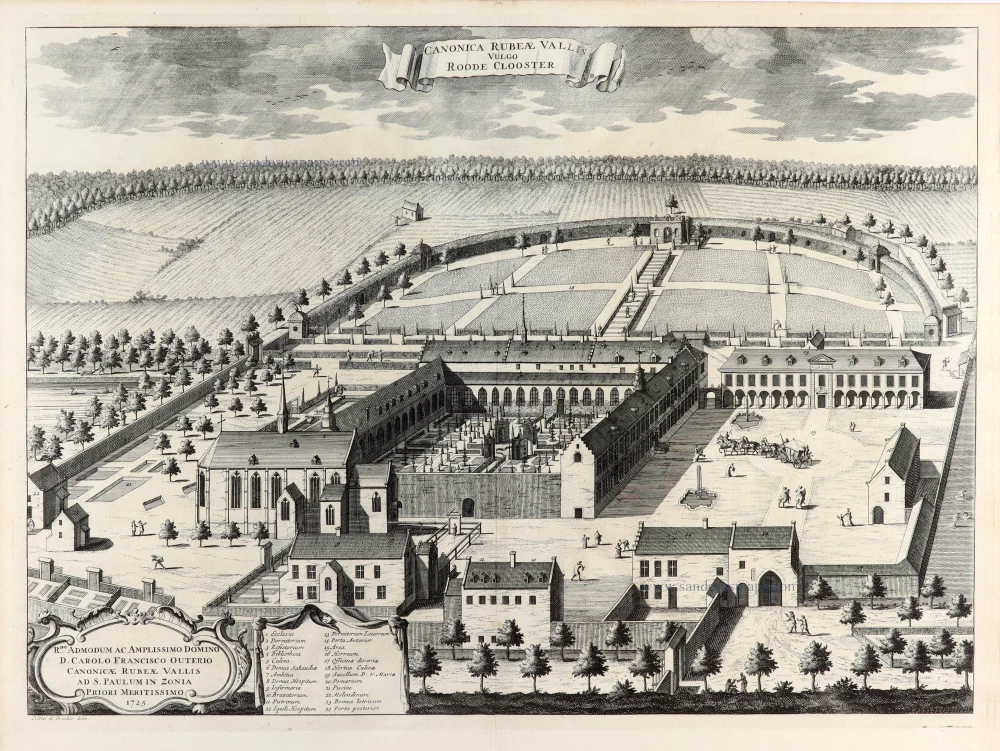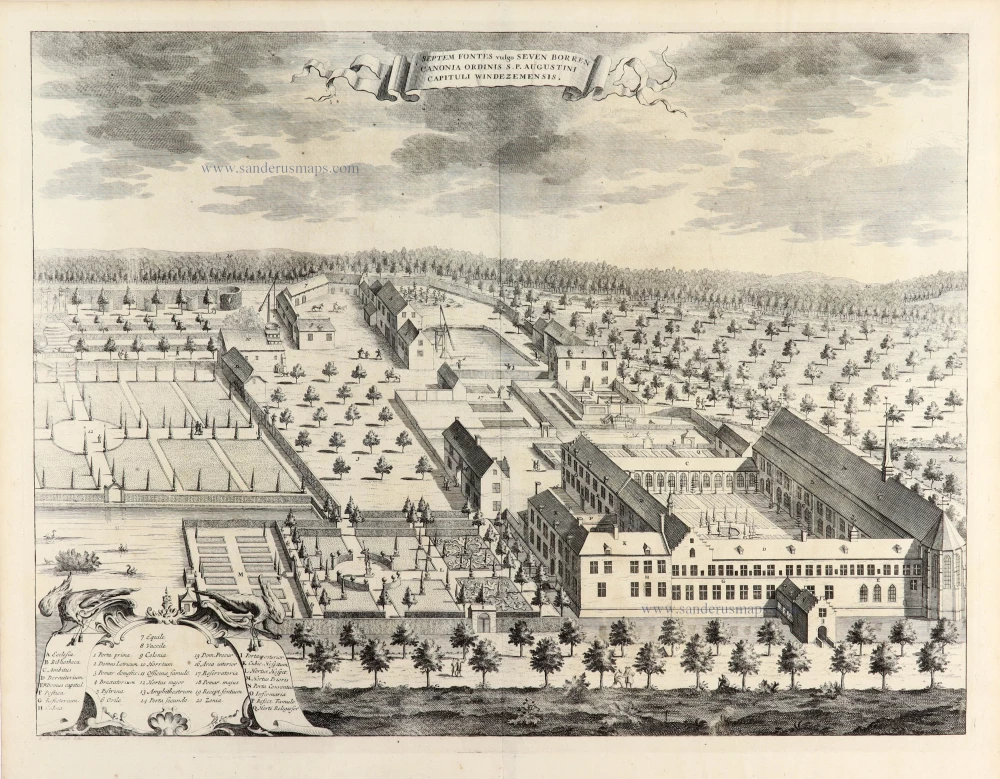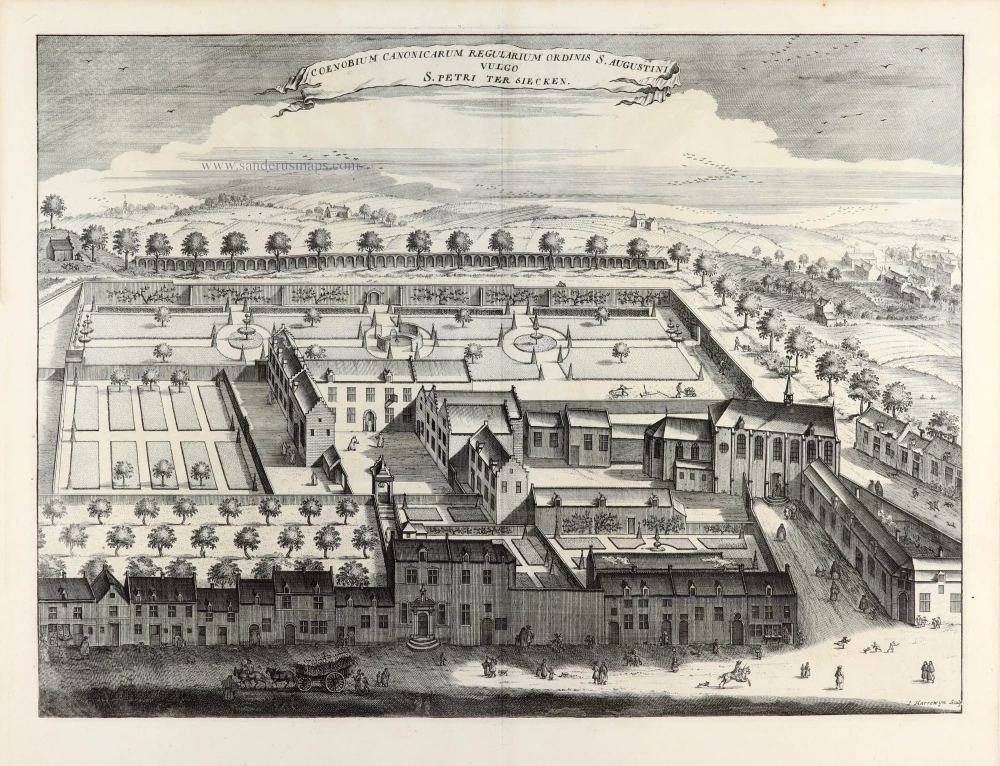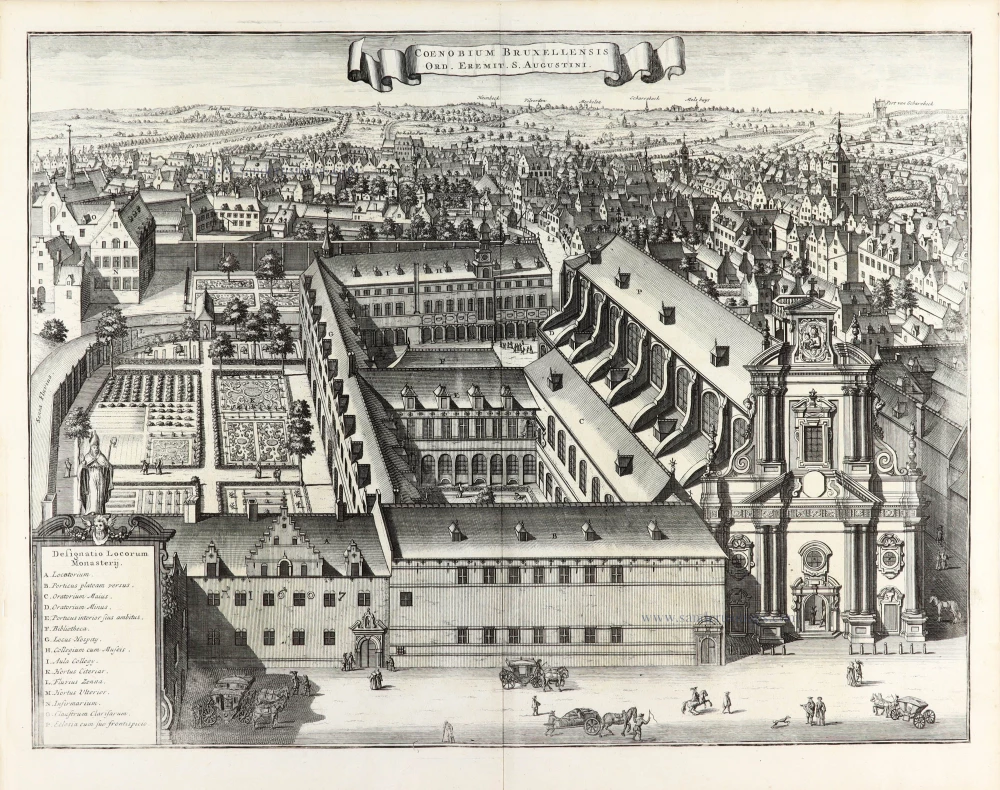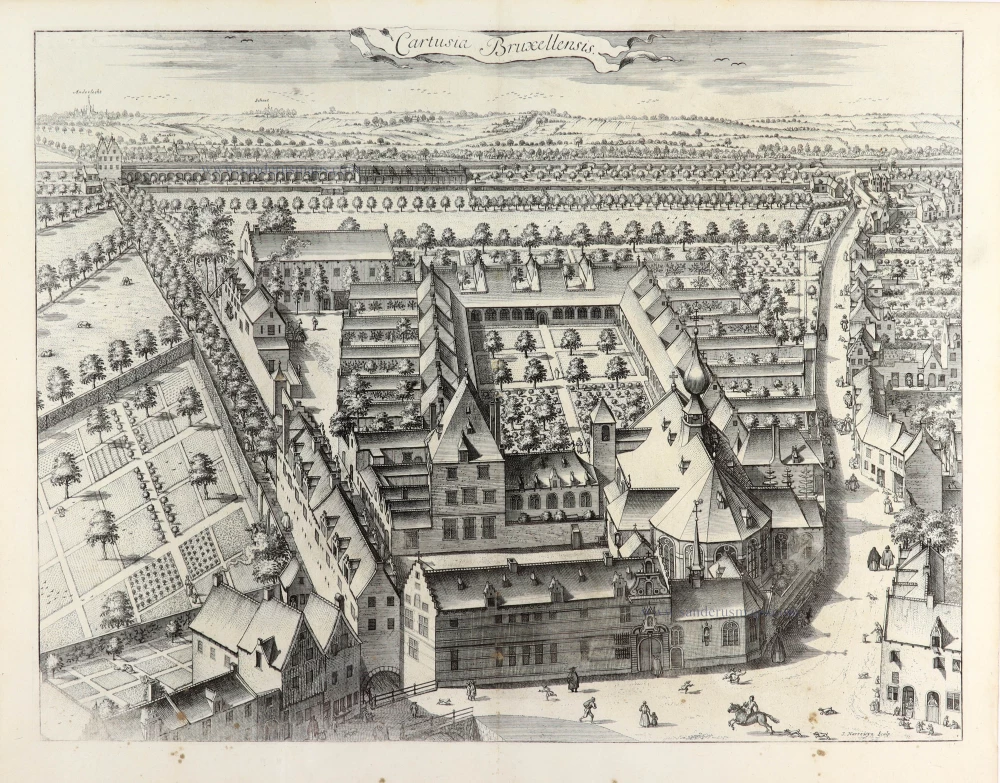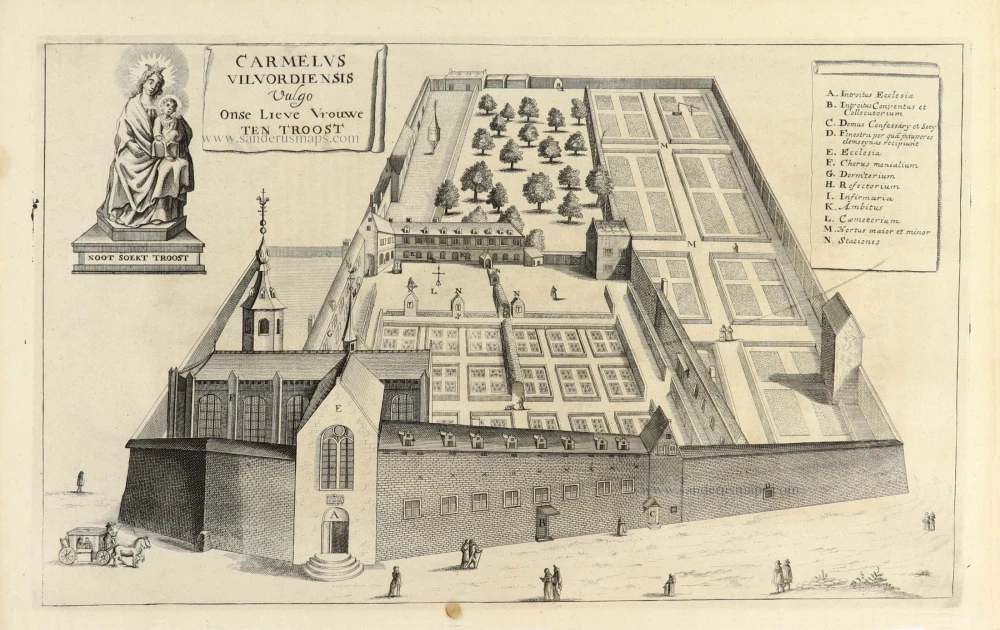Brussels - Monastery Jericho (Klooster Jericho), by Antonius Sanderus. 1726
Antonius Sanderus (Antwerpen, 1586 – Affligem, 1664)
Antoon Sanders (in Latin Antonius Sanderus) came from a distinguished Ghent family that briefly stayed in Antwerp after temporarily fleeing the Ghent Republic.
Antonius Sanderus, a man of exceptional intellectual prowess, began his Latin studies at the renowned Jesuit college of Oudenaarde and further honed his knowledge in Ghent. His thirst for knowledge led him to pursue philosophy at the Jesuit College of Douai, where he earned a Master's Artium in 1609, a testament to his scholarly dedication.
In 1611, Sanderus was ordained a priest in Ghent and became a pastor in a few hamlets near Eeklo. However, despite the relative calm of the Twelve Years' Truce, the region was not without its tensions. Sanderus found himself in a precarious position due to his controversial writings, which included critiques of Anabaptism in Flanders. These critiques sparked heated debates and raised eyebrows among his peers.
In 1615, he became Baccalaureus in theology at the University of Leuven, and in 1619, he returned to Douai, where he obtained a degree in theology at the University of Douai.
In 1621, he returned to Ghent, where Bishop Antonius Triest protected him. In 1623, he was appointed chaplain and secretary to Cardinal Alfonso de la Cueva, the governor of the Southern Netherlands under Philip IV of Spain.
1625, he became a canon at St. Martin's Church in Ypres.
In the meantime, he conducted extensive research for a prestigious history of the county of Flanders, the Flandria Illustrata. For these searches, he visited monasteries and castles to consult the archives, a testament to his dedication and thoroughness as a historian. However, this meticulous approach to research was not always appreciated by the other canons of Ypres, who felt he was neglecting his other duties.
That is why he resigned from his religious functions in 1654 and was appointed Censor Librorum in Brussels, a position of significant influence in controlling and regulating printed materials. In this role, he played a crucial part in shaping the city's intellectual and cultural life.
In 1668, he resigned as a canon of the Ypres chapter. The reasons for this decision are not entirely clear. Still, it is believed that his increasing focus on his historical research and the offer of a more suitable environment for his work at the Affligem Abbey were contributing factors. Finally, he left the city to settle at the Affligem Abbey, where he was warmly received by the abbot Benedictus van Haeften.
He died there on January 16, 1664, and was buried in the abbey church.
Antonius Sanderus published historical works from 1610, but his magnum opus is the richly illustrated Flandria Illustrata, sive Descriptio Comitatus Istius per Totum Terrarum Orbis Terrarum. The publication was begun by Henricus Hondius, who had a publication contract with Sanderus as early as 1634. It was a landmark in the study of Flanders' history, featuring numerous portraits, plans, views, and maps. In 1641, Hondius published the first volume as the Theatrum Flandriae in Leiden, but immediately sold the rights to Joan Blaeu. They published two volumes of the work in 1641 and 1644, respectively, with a fake publisher's address in Cologne. The work's influence extended beyond its initial publication, with Blaeu using 15 maps from the Flandria Illustrata for his Atlas Maior, and most of the plans were used in the town book of the Royal Netherlands.
In 1659, he published a history of the abbeys and monasteries of Brabant: the Chorographia sacra Brabantiae.
Monasterium Beatae Mariae Rosae Plantatae in Iericho.
Item Number: 30713 Authenticity Guarantee
Category: Antique maps > Europe > Belgium - Cities
Brussels - Monastery Jericho (Klooster Jericho), by Antonius Sanderus.
Title: Monasterium Beatae Mariae Rosae Plantatae in Iericho.
J. Harrewyn Sculp:
Engraver: Jacques Harrewyn.
Date: 1726.
Copper engraving, printed on paper.
Image size: 360 x 460mm (14.17 x 18.11 inches).
Sheet size: 400 x 495mm (15.75 x 19.49 inches).
Verso: Blank.
Condition: Excellent.
Condition Rating: A+.
From: Antonii Sanderi Presbyteri Chorographia Sacra Brabantiae Sive Celebrium Aliquot In Ea Provincia Abbatiarum, Coenobiorum, Monasteriorum, Ecclesiarum, Piarumque Fundationum Descriptio. Den Haag, Van Lom, 1726-27.
Antonius Sanderus (Antwerpen, 1586 – Affligem, 1664)
Antoon Sanders (in Latin Antonius Sanderus) came from a distinguished Ghent family that briefly stayed in Antwerp after temporarily fleeing the Ghent Republic.
Antonius Sanderus, a man of exceptional intellectual prowess, began his Latin studies at the renowned Jesuit college of Oudenaarde and further honed his knowledge in Ghent. His thirst for knowledge led him to pursue philosophy at the Jesuit College of Douai, where he earned a Master's Artium in 1609, a testament to his scholarly dedication.
In 1611, Sanderus was ordained a priest in Ghent and became a pastor in a few hamlets near Eeklo. However, despite the relative calm of the Twelve Years' Truce, the region was not without its tensions. Sanderus found himself in a precarious position due to his controversial writings, which included critiques of Anabaptism in Flanders. These critiques sparked heated debates and raised eyebrows among his peers.
In 1615, he became Baccalaureus in theology at the University of Leuven, and in 1619, he returned to Douai, where he obtained a degree in theology at the University of Douai.
In 1621, he returned to Ghent, where Bishop Antonius Triest protected him. In 1623, he was appointed chaplain and secretary to Cardinal Alfonso de la Cueva, the governor of the Southern Netherlands under Philip IV of Spain.
1625, he became a canon at St. Martin's Church in Ypres.
In the meantime, he conducted extensive research for a prestigious history of the county of Flanders, the Flandria Illustrata. For these searches, he visited monasteries and castles to consult the archives, a testament to his dedication and thoroughness as a historian. However, this meticulous approach to research was not always appreciated by the other canons of Ypres, who felt he was neglecting his other duties.
That is why he resigned from his religious functions in 1654 and was appointed Censor Librorum in Brussels, a position of significant influence in controlling and regulating printed materials. In this role, he played a crucial part in shaping the city's intellectual and cultural life.
In 1668, he resigned as a canon of the Ypres chapter. The reasons for this decision are not entirely clear. Still, it is believed that his increasing focus on his historical research and the offer of a more suitable environment for his work at the Affligem Abbey were contributing factors. Finally, he left the city to settle at the Affligem Abbey, where he was warmly received by the abbot Benedictus van Haeften.
He died there on January 16, 1664, and was buried in the abbey church.
Antonius Sanderus published historical works from 1610, but his magnum opus is the richly illustrated Flandria Illustrata, sive Descriptio Comitatus Istius per Totum Terrarum Orbis Terrarum. The publication was begun by Henricus Hondius, who had a publication contract with Sanderus as early as 1634. It was a landmark in the study of Flanders' history, featuring numerous portraits, plans, views, and maps. In 1641, Hondius published the first volume as the Theatrum Flandriae in Leiden, but immediately sold the rights to Joan Blaeu. They published two volumes of the work in 1641 and 1644, respectively, with a fake publisher's address in Cologne. The work's influence extended beyond its initial publication, with Blaeu using 15 maps from the Flandria Illustrata for his Atlas Maior, and most of the plans were used in the town book of the Royal Netherlands.
In 1659, he published a history of the abbeys and monasteries of Brabant: the Chorographia sacra Brabantiae.

